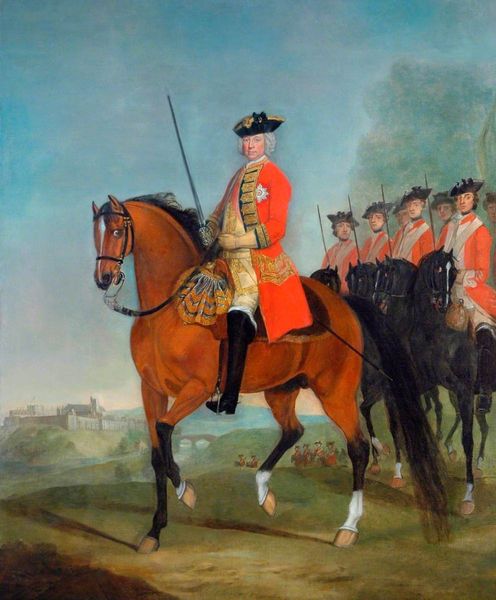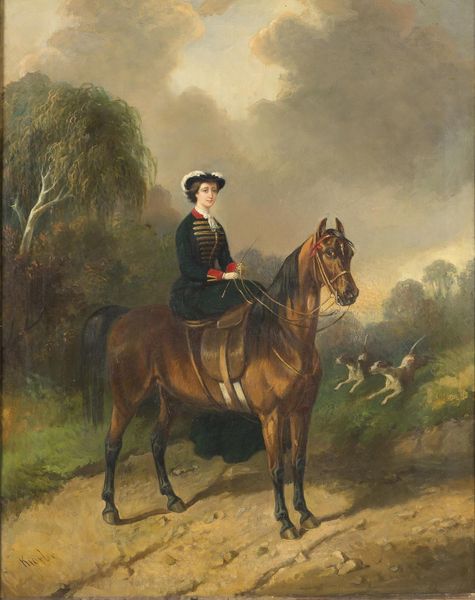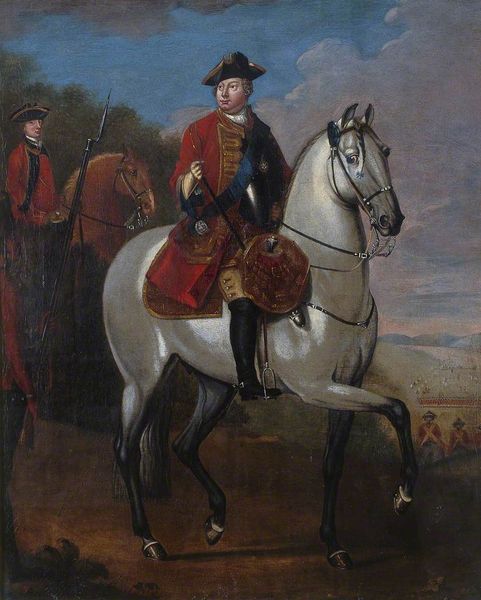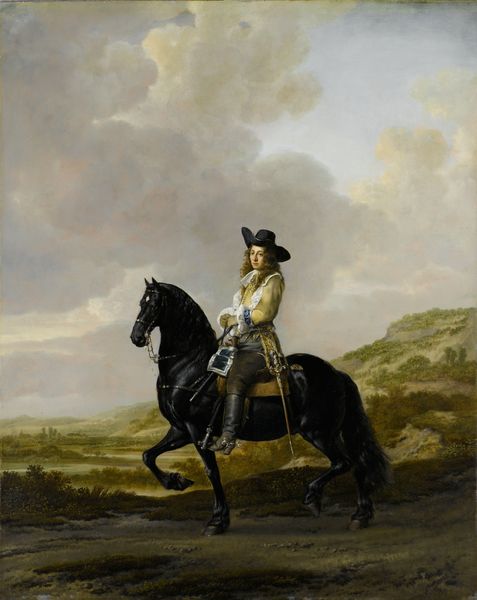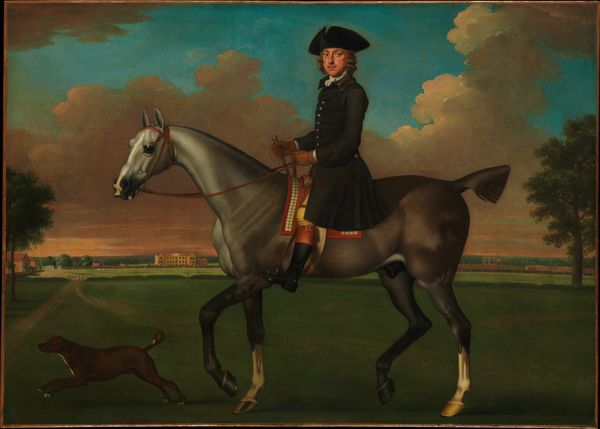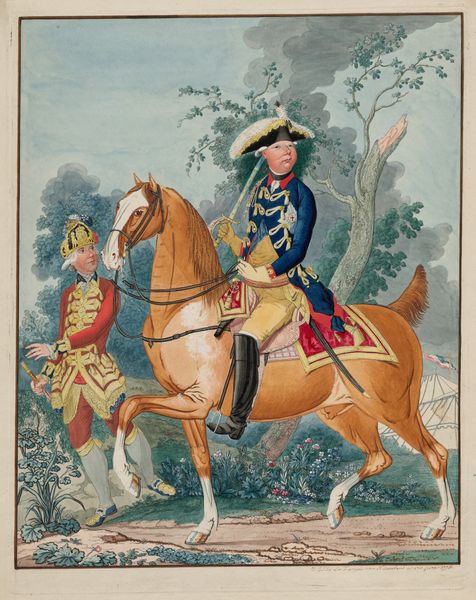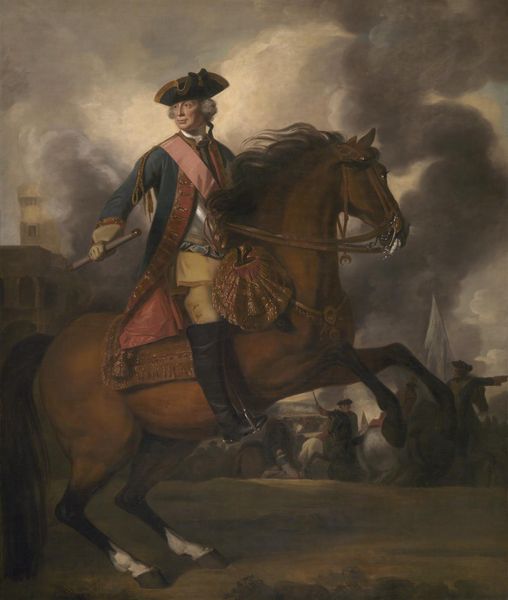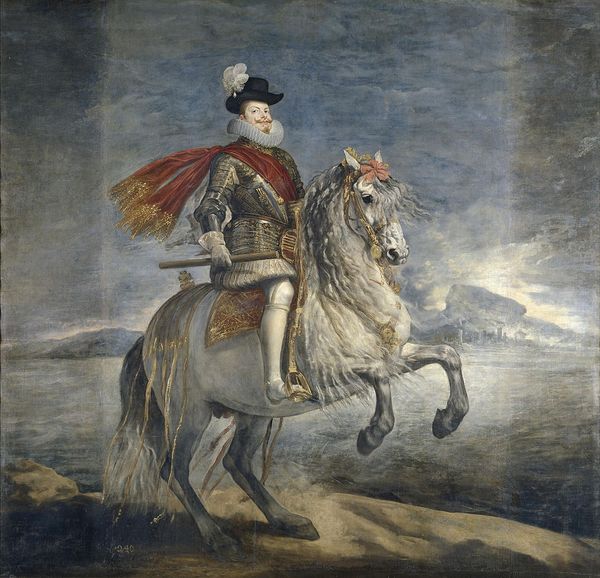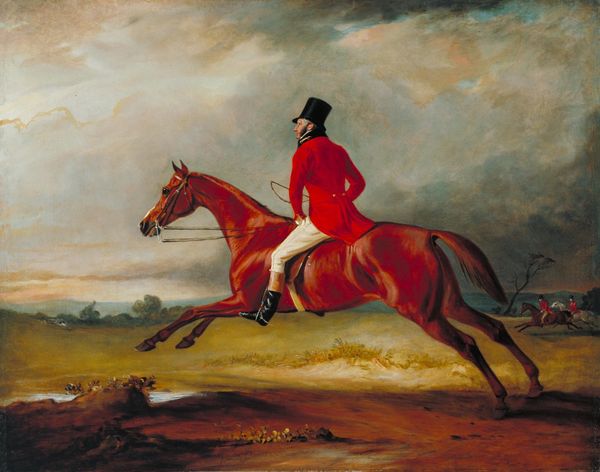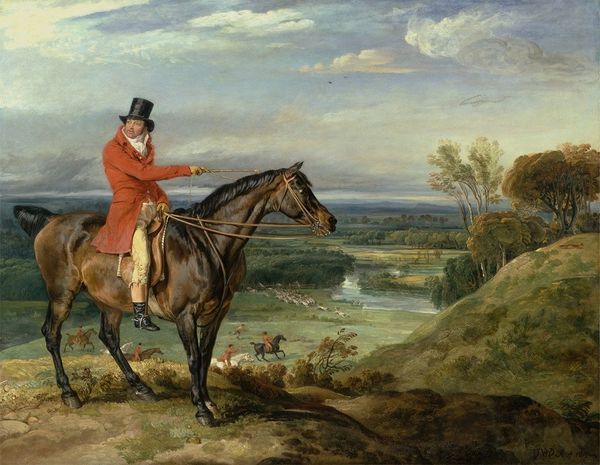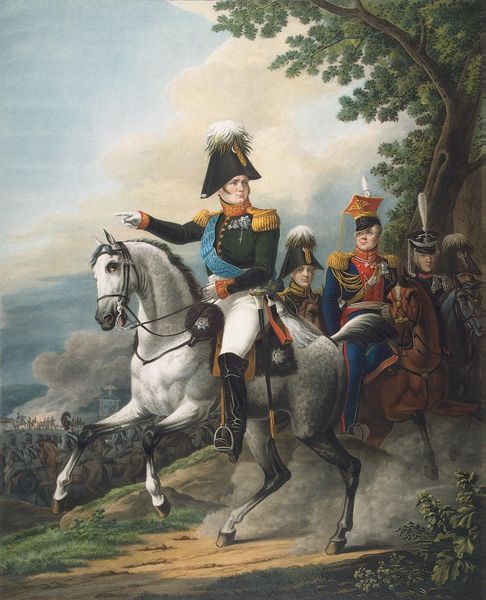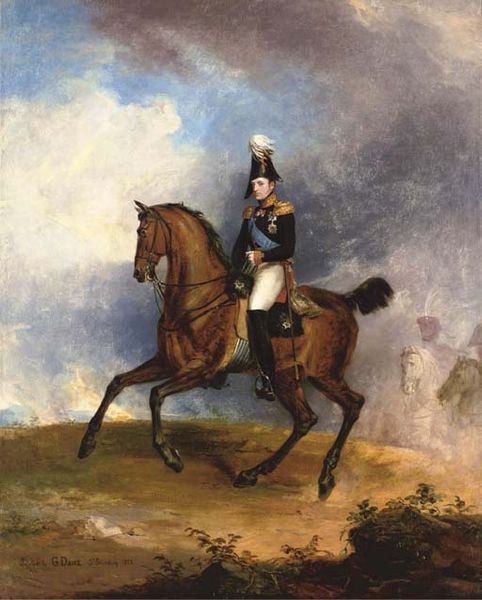
painting, oil-paint
#
portrait
#
baroque
#
painting
#
oil-paint
#
landscape
#
oil painting
#
history-painting
#
portrait art
#
erotic-art
Copyright: Public domain
Curator: Here we have David Morier's 1751 portrait of William Kerr, the 4th Marquess of Lothian, resplendent upon a charger. My immediate thought is how this work epitomizes early British portraiture—all those carefully chosen details. Editor: It strikes me as slightly static. There’s a stillness, a posed quality despite the suggestion of movement in the horse’s raised leg. The almost luminous rendering of fabric versus the matte quality of the horse’s coat feels intentional. What statements could we make about this portrait regarding the time of production? Curator: The portrait screams class, rank and power, certainly. Look at the oil paint handling to produce luxurious fabrics. It's a performance of wealth through skilled artistic labour. We see pictorial records and class statements throughout artistic canons. This feels no different. Editor: I concede the performative element of wealth, it is indeed visually communicated and can not be dismissed. Still, my attention lingers on how Morier navigates form. Notice the arrangement of shapes, how the verticality of the Marquess and his steed is echoed by the trees, while the landscape curves subtly around them, pushing our gaze toward the action in the background. What of it? Curator: True, the landscape plays a supporting role, contextualizing the Marquess. The workers pictured on the right of the portrait clearly perform a role subservient to that of the figure upon the horse; who would be involved in its material production. It reveals hierarchical social relationships, typical of aristocratic patronage and colonial extraction of materials for paint production from across the globe. It showcases not just individual portrayal but wider imperialist economies and unequal exchanges of materials to make the work. Editor: Precisely! And the way he models light is also key; consider how he sculpts the faces to catch light and subtly uses chiaroscuro to lend them dimension. I would go as far as to say that even these "supporting players" play a role to the grandstanding. Curator: I am left, though, questioning art history as purely connoisseurship when these "grand" aristocratic figures depended on exploitation in both resources and labour to commission work. It taints the idea of the sublime with an unpalatable truth about economic production. Editor: A valid perspective to close on, reminding us to observe closely not only what we see but the larger contexts and dialogues behind the image.
Comments
No comments
Be the first to comment and join the conversation on the ultimate creative platform.
